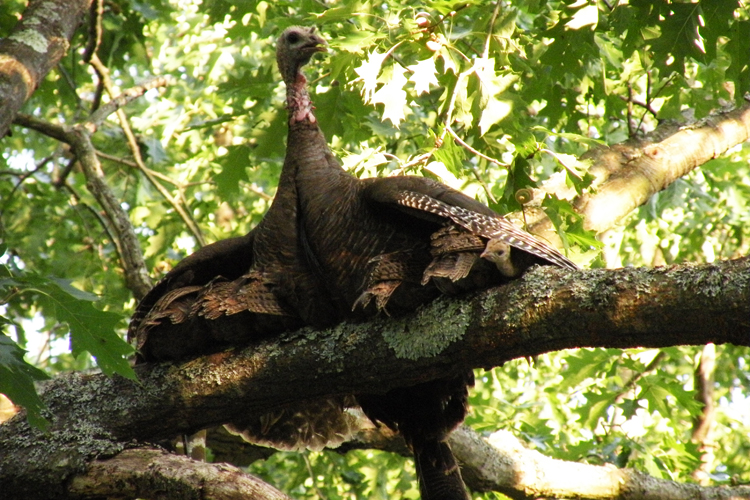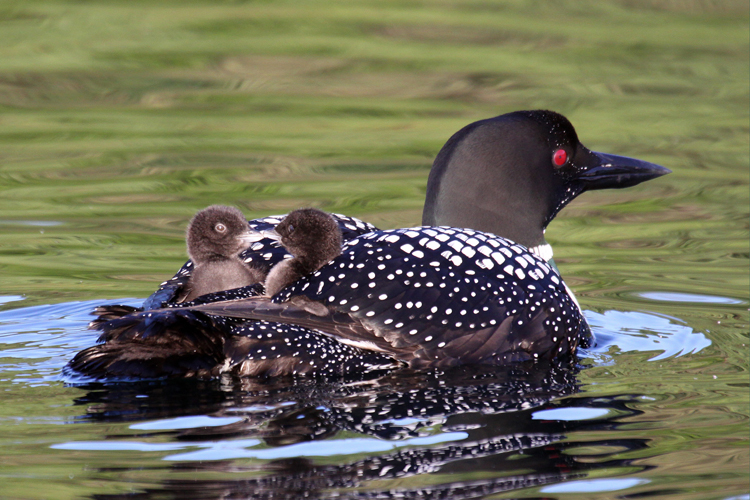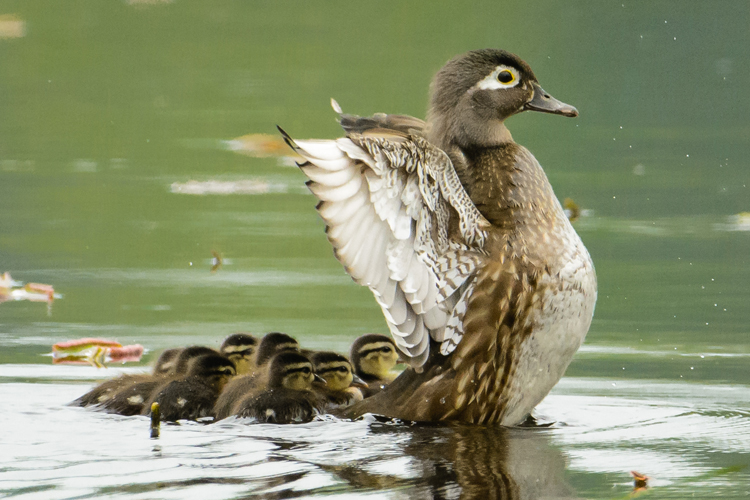
Photo by Adrianne Mathiowetz
Rosemary Mosco is a naturalist, science communicator, and the brilliant cartoonist behind Bird and Moon science and nature cartoons. (She’s also a former member of Mass Audubon’s Marketing team, so you may recognize her name from past posts on this blog!)
We had the pleasure of chatting with Rosemary recently about her artwork, inspiration, and brand new book, Birding Is My Favorite Video Game: Cartoons about the Natural World from Bird and Moon, which shows the funny side of nature (yes, there is one!) and why comics and science are natural allies. Read on to hear more from Rosemary about making unloved creatures lovable, fashion tips from nature, and finding the humor in everything.
To meet Rosemary in person, join us at the Drumlin Farm Nature Center in Lincoln on Thursday, June 21, from 7:30–8:45 pm for an Author Talk & Book Signing. The event is free to Mass Audubon members ($5 for nonmembers) and copies of the book will be available for purchase through the Mass Audubon Shop.
How long have you been drawing comics and when did you start intertwining nature topics and humor?
I can’t remember when I started drawing comics, but I must have been pretty young. I had piles of newspaper comic books—lots of Bloom County, Cathy, For Better Or For Worse, Calvin and Hobbes. I’d draw my own strips about people, politics, and the embarrassing bands I liked to listen to.
I was always obsessed with nature, but I had an epiphany about blending nature and humor when I was at a nature-based summer camp. A guy from the local natural history museum came by to give a lecture, but he didn’t stand in front of us and talk. He put a huge drawing pad on the floor and we clustered around it. He talked about dinosaurs and drew pictures of them at the same time and did funny voices! I thought, “Wait, this is a career option?” His jokes helped me remember the important facts. I was hooked.
Where does your inspiration come from? How do you choose your subjects?
I spend time reading a lot of journal articles and field guides, I go to lectures, and I hike a lot. Nature is endlessly inspirational. The really hard part is coming up with jokes. I just sort of have to wait until I come across a funny idea. Sometimes it can take a long time!
I love drawing colorful birds, but I also try to talk about animals that people don’t like. I want to encourage people to love the unloved critters—bacteria that live on your skin, vomiting vultures, mucus-covered hagfish, stinky snakes, etc.
 You use several different illustration styles in the book—where/when did you learn to draw and how did you develop your unique style(s)?
You use several different illustration styles in the book—where/when did you learn to draw and how did you develop your unique style(s)?
My comic output is pretty slow. I drew this book’s comics over the past 15 years! That’s a long time and my style has changed considerably. Most of that is because I’ve been experimenting. I’ve had training in writing but not in illustration. I’ve taken a few painting classes and other art classes over the years.
I just try different things and see what works. I’m always learning. I try to make each critter look relatable, with big eyes or smiles or familiar expressions. But I include important field marks, too.
How do you strike a balance between engaging meaningfully with a topic and avoiding difficult-to-understand jargon?
It’s a balancing act, and I feel like I’m always learning. A science writer once told me, “We tend to underestimate our readers’ intelligence and overestimate their vocabulary.”
Sometimes scientists and science writers use huge words, and when people don’t understand us, we assume it’s because they’re not smart. But people can understand any concept you throw at them if you use the right words. That’s why I try to avoid jargon unless I’m speaking to a scientific audience or I want people to learn a fun new word.
Do you have any favorites from the book?
I’m really proud of Fashion Tips From Nature. Animals have the weirdest appendages for courtship or protection from predators and I love the idea of people exploiting those styles—wearing a shirt that looks like poop, for example, so that nobody will approach them.
A few years ago, a museum in Ithaca called PRI’s Museum of the Earth did an exhibit on my comics, and they had a fashion corner where people could try on weird animal-inspired clothes. It was ridiculously fun.
Any advice for young naturalists looking to approach nature and science from a new angle?
Everyone has their own unique style and perspective. We’ve all got something special to offer. If you think about what you love and how to convey it, you’ve already taken the most important step!
Also, try to find the humor in everything. Nature is full of ups and downs, joys and heartbreaks. Laughter will help keep you going.
To learn more and have a few good laughs with Rosemary, join us at the Drumlin Farm Nature Center in Lincoln, on Thursday, June 21, from 7:30–8:45 pm for an Author Talk & Book Signing.










